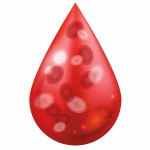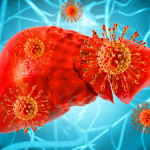A rapid model of testing for and treating hepatitis C led to more young people who inject drugs beginning antiviral therapy and being successfully cured, according to results presented at IDWeek 2021.
Some 80% of hepatitis C virus (HCV) transmission occurs among people who inject drugs. Younger injection drug users account for a larger proportion of new cases and are less likely to access treatment compared with older individuals. If left untreated, HCV can lead to complications, such as cirrhosis and liver cancer. Simpler care models may help better target and treat hepatitis C in this population.
Benjamin Eckhardt, MD, of the New York University School of Medicine, and colleagues conducted the HCV-Seek, Test & Rapid Treatment (HCV-ST&RT; NCT03627546) study, a randomized pilot clinical trial to explore the potential benefits of a community-based test-and-treat model of HCV care for young people who inject drugs.
Prospective participants were screened for hepatitis C as part of the Staying Safe study. Those who tested positive were directed to the HCV-ST&RT trial. The researchers enrolled 38 individuals between ages 18 and 29 who tested positive for HCV antibodies, had not previously received treatment and had injected drugs within the last 30 days.
The study population was randomized to receive either rapid treatment or usual care, with the primary outcome being sustained virologic response (SVR), or an undetectable viral load 12 weeks after completing treatment, which is considered a cure.
Participants in the usual care arm were tested for HCV RNA on the same day and directed to local care providers if confirmed to be positive. Some people with HCV antibodies have cleared the virus naturally and do not have current active infection, as indicated by detectable HCV RNA, and therefore do not need treatment. Of the 20 individuals in this group, 11 were found to be positive for HCV RNA on confirmatory testing. However, just five of them had an initial visit with a provider and only three started antiviral treatment.
Participants in the rapid treatment arm underwent a medical examination, confirmatory HCV RNA testing and other lab tests on the same day and received a weeklong starter pack of Epclusa (sofosbuvir/velpatasvir). Of the 19 people in this group, 14 were assigned to receive rapid treatment, and all but one of them started antiviral therapy. These individuals were scheduled for follow-up visits at day 7 to assess side effects and restock their Epclusa supply for 21 days. On day 28, lab testing was conducted and Epclusa was resupplied for 56 days. At the end of 12 weeks, they were tested for SVR.
The researchers found that participants were much more likely to achieve a cure using the rapid treatment model compared with usual care. Of the 13 people in the rapid treatment group who began antiviral therapy, all but one completed treatment, and nine (69%) achieved SVR; three others had unknown outcomes. Of the three individuals who began treatment in the usual care arm, only one person (33%) completed treatment and achieved SVR.
Integrating testing and treatment into the initial visit sped up the HCV care model, ensuring that participants began treatment within a week of receiving confirmatory testing, often within a day of verifying their positive status.
“Meeting young PWID [people who inject drugs] where they’re at and initiating HCV treatment ‘in the moment’ without the need for repeat visits (minimal monitoring) appears to be a promising strategy for treating this hard-to-reach population,” the researchers concluded.







Comments
Comments